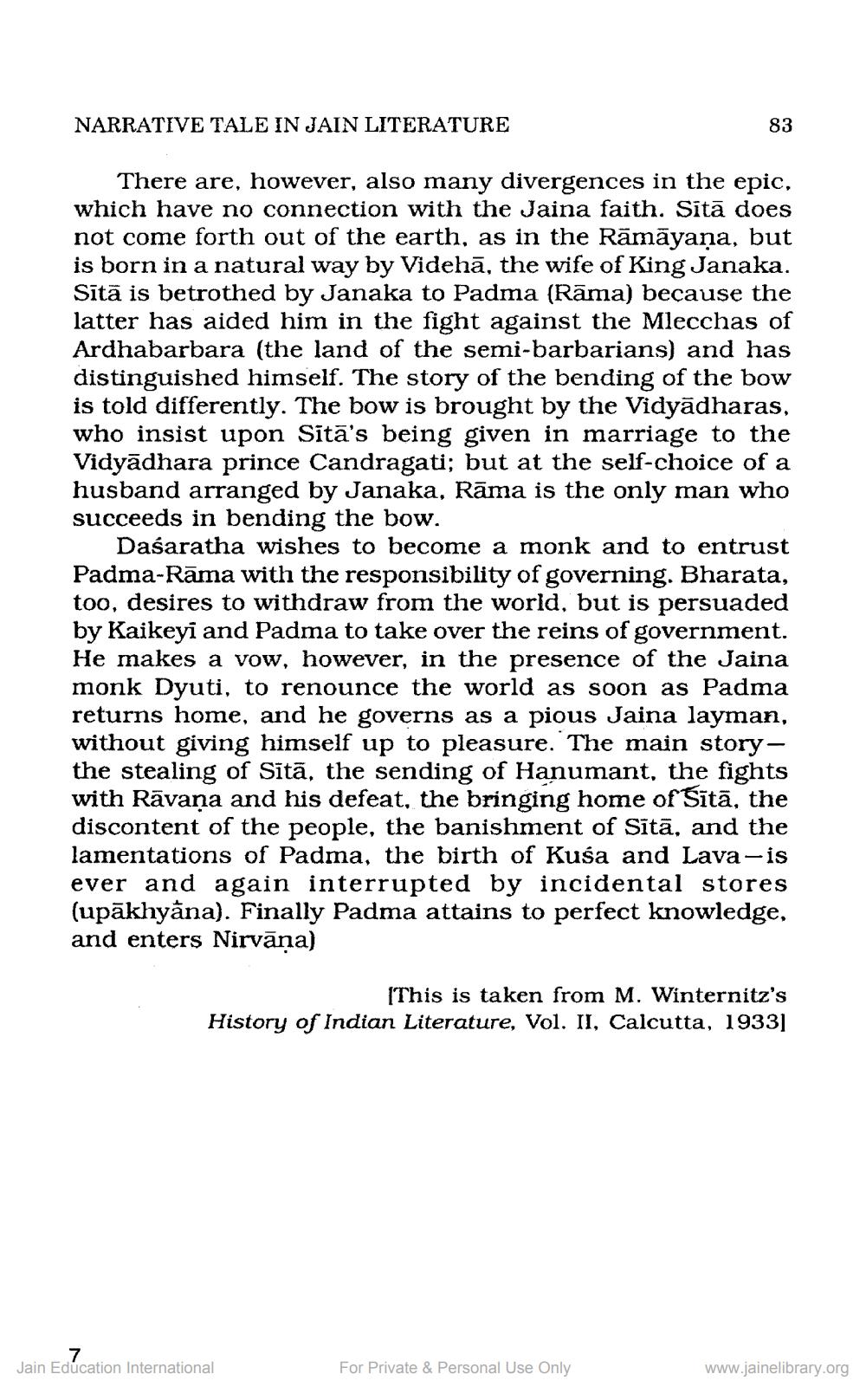________________
NARRATIVE TALE IN JAIN LITERATURE
83
There are, however, also many divergences in the epic, which have no connection with the Jaina faith. Sītā does not come forth out of the earth, as in the Rāmāyaṇa, but is born in a natural way by Videhā, the wife of King Janaka. Sītā is betrothed by Janaka to Padma (Rāma) because the latter has aided him in the fight against the Mlecchas of Ardhabarbara (the land of the semi-barbarians) and has distinguished himself. The story of the bending of the bow is told differently. The bow is brought by the Vidyādharas, who insist upon Sītā's being given in marriage to the Vidyādhara prince Candragati; but at the self-choice of a husband arranged by Janaka, Rāma is the only man who succeeds in bending the bow.
Daśaratha wishes to become a monk and to entrust Padma-Rāma with the responsibility of governing. Bharata, too, desires to withdraw from the world, but is persuaded by Kaikeyi and Padma to take over the reins of government. He makes a vow, however, in the presence of the Jaina monk Dyuti, to renounce the world as soon as Padma returns home, and he governs as a pious Jaina layman, without giving himself up to pleasure. The main storythe stealing of Sītā, the sending of Hanumant, the fights with Rāvana and his defeat, the bringing home of Gītā, the discontent of the people, the banishment of Sītā, and the lamentations of Padma, the birth of Kusa and Lava-is ever and again interrupted by incidental stores (upākhyāna). Finally Padma attains to perfect knowledge, and enters Nirvana)
(This is taken from M. Winternitz's History of Indian Literature, Vol. II, Calcutta, 1933]
Jain Education International
For Private & Personal Use Only
www.jainelibrary.org




